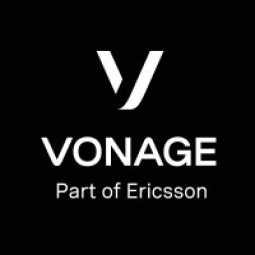下载PDF
ZEISS Vision Care Leverages the Vonage Video API to Power Face-to-Face Interactions and State-of-the-Art Eye Care
技术
- 应用基础设施与中间件 - API 集成与管理
适用行业
- 医疗保健和医院
适用功能
- 产品研发
- 销售与市场营销
用例
- 远程病人监护
服务
- 软件设计与工程服务
挑战
蔡司视力保健公司是一家领先的眼镜片和眼科仪器制造商,该公司致力于打造一种高质量的视频服务,以便随时随地提供最佳的眼科护理。其挑战在于将人性化融入到这种数字健康体验中,让眼科护理专家可以在任何地方进行检查和操作仪器,并支持与消费者/患者的远程联系,从招募、安排、检查前病史和数据收集,到整个远程验光检查和专家咨询,再到最终的发票管理和检查后或售后消费者/患者护理。
关于客户
蔡司是一家国际领先的科技企业,业务涉及光学和光电子领域。蔡司视力保健是蔡司的一个部门,是世界领先的眼镜片和眼科仪器制造商之一。该公司在全球近 50 个国家开展业务,其使命是塑造技术的未来,并不断通过其解决方案推动光学和相关领域的发展。蔡司视力保健致力于为客户提供高质量的眼部护理解决方案,利用先进的技术确保最佳效果。
解决方案
蔡司视力保健团队构建了蔡司 VISU360,这是一个连接蔡司仪器和服务生态系统的数字平台。该平台旨在支持与消费者/患者的远程联系,从招募、安排、检查前病史和数据收集,到整个远程验光和专家咨询,再到最终的发票管理和检查后或售后消费者/患者护理。为了将人性化融入这种数字健康体验,蔡司开发团队选择了 Vonage Video API 完全集成到 VISU360 平台中,并在患者和眼科护理专家之间提供无缝、安全、可靠的面对面互动。
运营影响
相关案例.

Case Study
Hospital Inventory Management
The hospital supply chain team is responsible for ensuring that the right medical supplies are readily available to clinicians when and where needed, and to do so in the most efficient manner possible. However, many of the systems and processes in use at the cancer center for supply chain management were not best suited to support these goals. Barcoding technology, a commonly used method for inventory management of medical supplies, is labor intensive, time consuming, does not provide real-time visibility into inventory levels and can be prone to error. Consequently, the lack of accurate and real-time visibility into inventory levels across multiple supply rooms in multiple hospital facilities creates additional inefficiency in the system causing over-ordering, hoarding, and wasted supplies. Other sources of waste and cost were also identified as candidates for improvement. Existing systems and processes did not provide adequate security for high-cost inventory within the hospital, which was another driver of cost. A lack of visibility into expiration dates for supplies resulted in supplies being wasted due to past expiry dates. Storage of supplies was also a key consideration given the location of the cancer center’s facilities in a dense urban setting, where space is always at a premium. In order to address the challenges outlined above, the hospital sought a solution that would provide real-time inventory information with high levels of accuracy, reduce the level of manual effort required and enable data driven decision making to ensure that the right supplies were readily available to clinicians in the right location at the right time.

Case Study
Gas Pipeline Monitoring System for Hospitals
This system integrator focuses on providing centralized gas pipeline monitoring systems for hospitals. The service they provide makes it possible for hospitals to reduce both maintenance and labor costs. Since hospitals may not have an existing network suitable for this type of system, GPRS communication provides an easy and ready-to-use solution for remote, distributed monitoring systems System Requirements - GPRS communication - Seamless connection with SCADA software - Simple, front-end control capability - Expandable I/O channels - Combine AI, DI, and DO channels

Case Study
Driving Digital Transformations for Vitro Diagnostic Medical Devices
Diagnostic devices play a vital role in helping to improve healthcare delivery. In fact, an estimated 60 percent of the world’s medical decisions are made with support from in vitrodiagnostics (IVD) solutions, such as those provided by Roche Diagnostics, an industry leader. As the demand for medical diagnostic services grows rapidly in hospitals and clinics across China, so does the market for IVD solutions. In addition, the typically high cost of these diagnostic devices means that comprehensive post-sales services are needed. Wanteed to improve three portions of thr IVD:1. Remotely monitor and manage IVD devices as fixed assets.2. Optimizing device availability with predictive maintenance.3. Recommending the best IVD solution for a customer’s needs.

Case Study
HaemoCloud Global Blood Management System
1) Deliver a connected digital product system to protect and increase the differentiated value of Haemonetics blood and plasma solutions. 2) Improve patient outcomes by increasing the efficiency of blood supply flows. 3) Navigate and satisfy a complex web of global regulatory compliance requirements. 4) Reduce costly and labor-intensive maintenance procedures.

Case Study
Harnessing real-time data to give a holistic picture of patient health
Every day, vast quantities of data are collected about patients as they pass through health service organizations—from operational data such as treatment history and medications to physiological data captured by medical devices. The insights hidden within this treasure trove of data can be used to support more personalized treatments, more accurate diagnosis and more advanced preparative care. But since the information is generated faster than most organizations can consume it, unlocking the power of this big data can be a struggle. This type of predictive approach not only improves patient care—it also helps to reduce costs, because in the healthcare industry, prevention is almost always more cost-effective than treatment. However, collecting, analyzing and presenting these data-streams in a way that clinicians can easily understand can pose a significant technical challenge.






